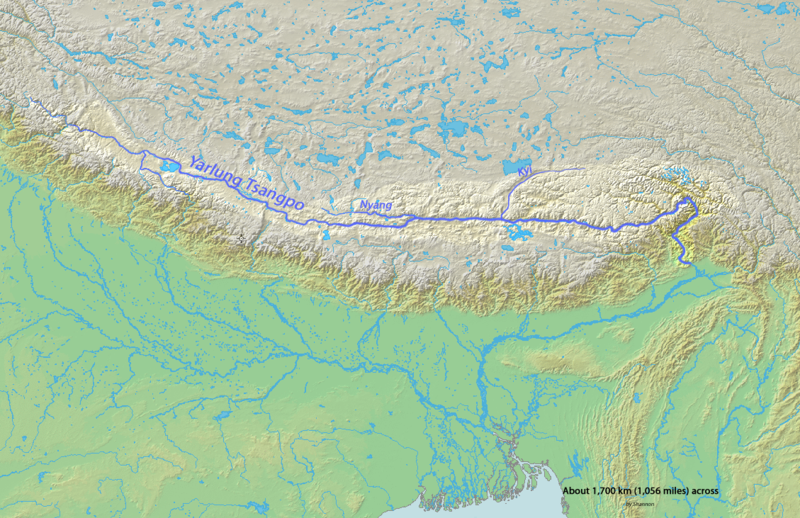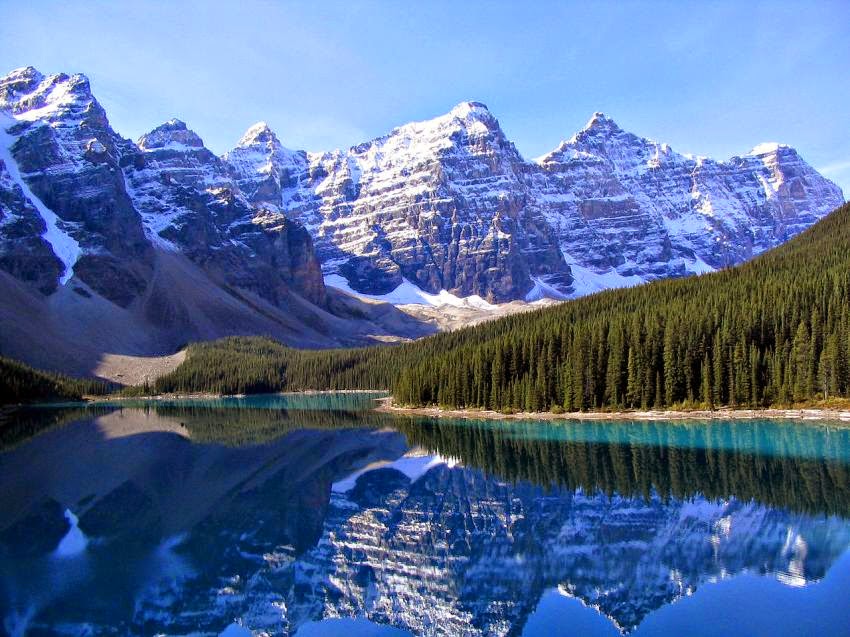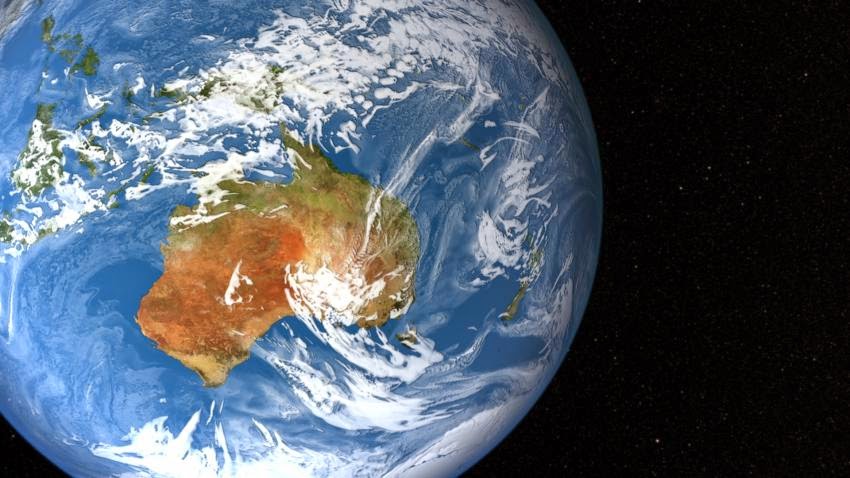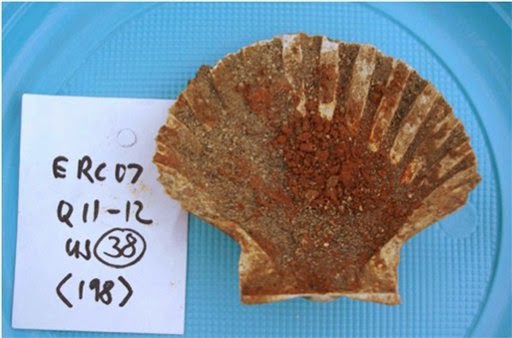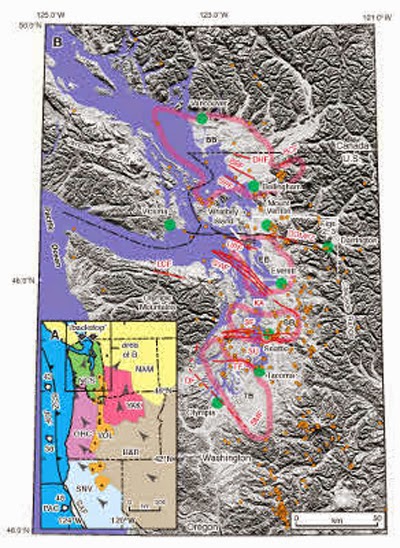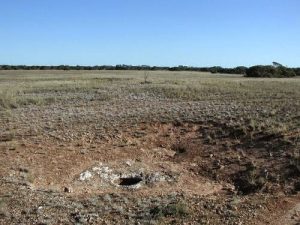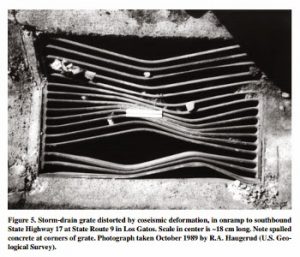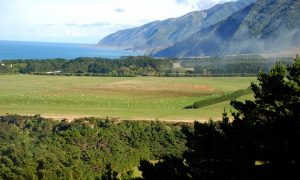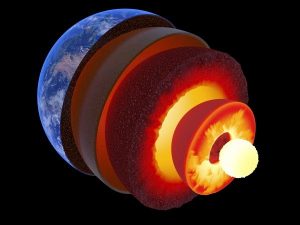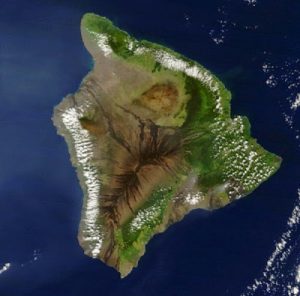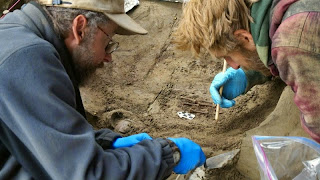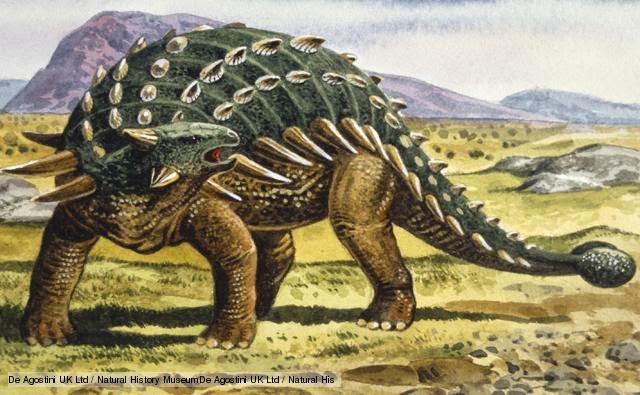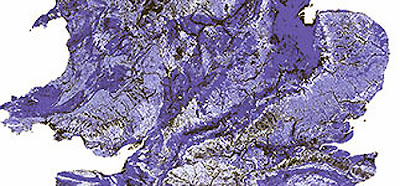
As the floods that struck Britain in early 2014 made all too clear, heavy rain can be bad news for homes, businesses and the environment. Tom Marshall found out how the British Geological Survey (BGS) is helping housebuilders control flooding while saving money.
The skies open and water gushes off roofs, down gutters and into drains. Heavy rain quickly overwhelms the drainage network; before long, water backs up and starts creeping towards buildings. In cities most of the ground is covered with concrete and tarmac, so the runoff can’t easily soak away.
Many UK drainage systems are old and connect to sewers, so torrential rain can send sewage sluicing into drains and eventually into rivers, killing fish en masse. On top of this ecological havoc, the sudden pulse of rainwater often makes watercourses burst their banks downstream.
This is all dangerous and costly; floods after heavy rain in 2007 left insurers facing an estimated £3.2 billion bill. The floods of early 2014 destroyed vital infrastructure and inundated at least 5,800 homes, at an average repair cost of £30,000-£40,000. Our changing climate is likely to make such extreme weather more common, and we need better ways of coping. One is a set of techniques known as Sustainable Drainage Systems – SuDS.
The key is slowing water down – diverting it into ponds and artificial wetlands or giving it time to soak into the ground (‘infiltration’) instead of discharging it directly to drains. The more water we can put into the soil, the less risk heavy rain will cause flooding. Even if this isn’t possible, water can be held in underground tanks and then released slowly.
Housebuilders use many of these techniques already, but new regulations mean their involvement needs to become more systematic. The Floods and Water Management Act took effect in 2010; this year or next Defra plans to release National Standards for Sustainable Drainage. The details aren’t yet certain, but local authorities are already setting up SuDS approval bodies.
The upshot is that runoff from a new housing development must now be no greater than from a greenfield site. That’s during an extreme storm, plus 30 per cent to allow for climate change. Developers must prioritise infiltration to deal with excess water, turning to alternatives only if it’s unworkable.
This all costs money. Developers must spend time planning and building effective drainage schemes that take up as little space as possible, to maximise housing density.
BGS gets involved during this planning phase, when developers are investigating whether infiltration SuDS are appropriate, and if so which kind. This depends on the soil and geology beneath. With permeable ground, promoting infiltration may just be a matter of diverting water into ponds or soakaways so it can be absorbed. On poorly-draining land, though, developers might need to install systems with a large surface area, such as permeable pavements, or with basins where water can be stored temporarily before infiltration.
Geological variation makes a big difference to the kind of drainage that’s appropriate. But until recently it was hard for developers to get a clear idea of ground conditions during the planning stage, before doing on-site tests. BGS researchers have produced a detailed Infiltration SuDS Map, bringing together 20 geological datasets to help the industry understand its drainage options.
Getting water into the ground
‘In theory you could get this information from a geological map,’ says Dr Rachel Dearden, a NERC Knowledge Exchange Fellow at BGS and head of the SuDS project. ‘But most developers don’t have the time or training to interpret these. We’re repackaging the information in a way that’s easy for the housebuilding industry to understand and act on.’
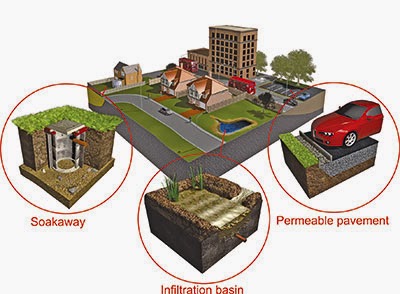 The maps are inexpensive – £1.50/km2 for the detailed version – and available over the internet. They let developers quickly narrow down their drainage options and highlight potential hazards from draining water into the ground. They’ll still need to do infiltration tests on site – but they get a headstart, beginning with more knowledge about the ground conditions.
The maps are inexpensive – £1.50/km2 for the detailed version – and available over the internet. They let developers quickly narrow down their drainage options and highlight potential hazards from draining water into the ground. They’ll still need to do infiltration tests on site – but they get a headstart, beginning with more knowledge about the ground conditions.
This isn’t only useful to housebuilders; it also helps local authorities decide if the SuDS plans they submit will work and take account of all relevant issues, before approving them. After all, it is the authorities that have to maintain schemes after work finishes.
‘The first question for developers is “could draining water into the ground potentially cause major problems?” and they need an indication of the answer at an early stage,’ Dearden explains. If the site sits over soluble limestone bedrock, infiltration could create house-swallowing sinkholes. Likewise if nearby slopes are unstable, it could trigger landslides. If the water table is already high, adding more could risk groundwater flooding. Or if the ground level has been built up artificially with material from elsewhere, storing water in it could release potentially dangerous contaminants.
Their second question is ‘will the ground drain?’ Developers need to understand the permeability of the ground, the depth of the water table and whether the site is on a floodplain. They must also bear in mind the ground’s stability – is it compressible? Will it shrink and swell? If so, repeatedly wetting and drying it could weaken foundations.
Finally, the groundwater itself could be a problem. Do people ultimately drink it? If infiltration SuDS are being installed in an area covered by an Environment Agency Source Protection Zone, the developer needs to be careful before doing anything that could harm groundwater quality; they may need to filter the runoff with artificial wetlands or swales (shallow vegetated ditches). If any of these problems are present, the earlier they know the better.
For housebuilders, the move towards SuDS isn’t without advantages. It can often even be cheaper than traditional drainage – there’s less outlay on pipes, concrete and other artificial materials. And nobody wants to see flooding or poisoned fish due to badly-planned drainage.
Developers are increasing their use of SuDS ahead of the new regulations. But they need clear guidance on how to do this without major cost increases. Dearden has been working closely with housebuilders, meeting representatives and presenting at industry conferences to spread the word about how BGS data can help them comply with regulations economically. She’s also met numerous local authorities to discuss their plans for SuDS approval.
Steve Wielebski, chairman of the National Technical Committee at the Home Builders Federation, notes that the industry has long experience in managing runoff from built-up areas. ‘The concept behind SuDS is four thousand years old – it’s nothing new,’ he says.
‘Everyone agrees that if we can get water into the ground, we should do it,’ he adds. ‘But until recently housebuilders haven’t had good information to inform initial research into drainage for a site, and that’s why our members are finding the BGS data so very useful.’ This lets developers target investigations much more precisely, reducing the need for expensive on-site research. ‘There’s so much high-quality information available so cheaply that it’s beyond me why anyone wouldn’t make use of it,’ Wielebski says. ‘Rachel has done the industry proud in getting the word out about this.’
Note : The above story is based on materials provided by Natural Environment Research Council. The original article was written by Dr Rachel Dearden.



